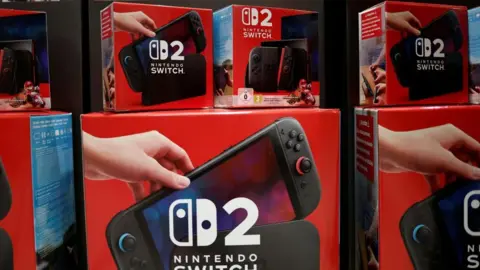In today’s rapidly evolving gaming industry, the financial burden of purchasing video games has become a significant concern for many players. With some video games priced at over £70, and new gaming consoles following suit with steep price tags, the impact on disposable income is unmistakable. This article explores the voices of gamers who share their experiences and coping strategies as they navigate these increasing costs.
Kady Sands, a 21-year-old gamer, reflects on her journey from childhood to adulthood in the gaming world. She first picked up a controller at the tender age of three and has since enjoyed games as a hobby. However, Kady’s financial reality has shifted; she now finds that purchasing new games can consume a hefty portion of her paycheck. The rise in prices has prompted her to adapt her gaming habits—opting for smaller, independent titles instead of high-budget releases, allowing her to enjoy her passion without breaking the bank. Not only does she prefer this route for financial reasons, but she also finds that indie games provide her with equal satisfaction and enjoyment.
Consoles are also experiencing significant price lifts. The Nintendo Switch 2, a recently launched hybrid console, has become popular despite its steep price of approximately £395.99. Games like “Mario Kart World” retail for around £74.99, adding to the financial strain for players like Kady. Other major companies are following suit; Microsoft and Sony have also increased their console prices and games, reflecting inflation and heightened production costs in the gaming industry. With costs reaching these heights, Kady notes how buying a game can equate to her daily wages as a bartender, making each purchase a considerable financial decision.
Nick Poole, CEO of UK Interactive Entertainment, comments on the rising production costs of video games. He notes that advancements in graphics and technology necessitate larger teams and more resources, which ultimately spikes the price of new releases. Poole tries to paint a clearer picture for players by comparing the expense of gaming to that of cinema; while a cinema ticket might cost £15-£20 for a three-hour experience, a video game can provide hundreds of hours of immersive gameplay. Such comparisons might help gamers consider the value proposition as they evaluate the cost of their entertainment.
However, some gamers like Dirk Casinillo, an aspiring professional gamer and online streamer from Llanelli, echo Kady’s sentiments, stating that the increases don’t necessarily correlate with improvements in their gaming experience. Dirk, who grew up playing competitively, now finds the prices of flagship titles unmanageable, indicating the gap between gamers’ expectations and the market’s realities. He mentions that £40 used to be a steep price for a game, while current prices can exceed £75, presenting a dilemma for many would-be buyers.
Nicholas Mayers, a passionate gamer studying game design, shares that the rising costs have made purchasing new titles a “hesitant decision.” Many gamers, including Nicholas, have had to make significant lifestyle sacrifices, like foregoing social activities, to afford games. He acknowledges the effort that goes into developing a game but also wishes that they could strike a better balance between price and accessibility.
The dialogue surrounding the increasing costs of gaming highlights a tension within the community. Gamers are torn between their love for a medium that offers an escape, connection, and entertainment, and the reality of their budgets, leading to difficult choices. As Kady points out, many in her gaming community are now prioritizing gaming over social events, a shift indicating their commitment yet highlighting the deepening divide between passion and affordability.
In conclusion, as video games continue to push boundaries in quality and experience, gamers face the unsettling issue of the rising costs associated with them. Whether embracing indie titles, balancing budgets, or forgoing social outings, the strategies are as varied as the players themselves, reflecting a resilient community navigating a complex landscape.











